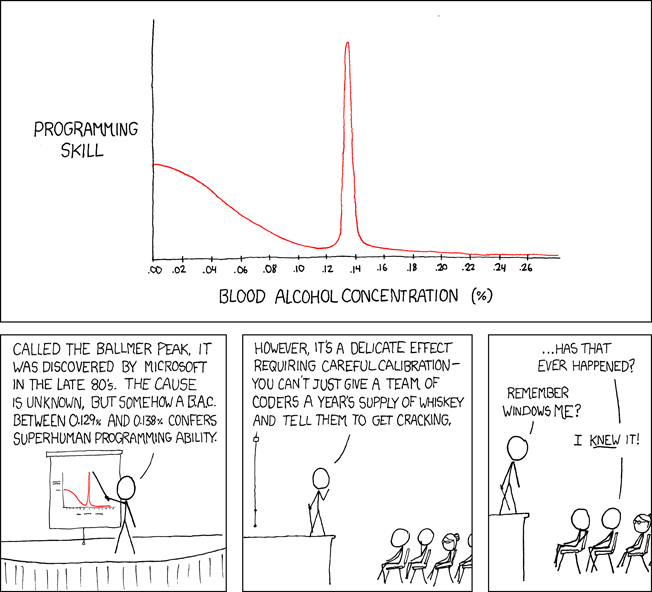I remember the times when the internet was a novelty for folks in my friends’ circle. This was back in 1997/1998, when IIT-Delhi decided to introduce a 2 Mbps line for all of IIT. A lot of new avenues opened up for all of us – people scurried to create email addresses on websites that would offer them the most space. I remember creating tantan66@hotmail.com in the bid to cash in on my nickname. Of course, given that most email providers let you have just 1 MB of space (Hotmail) or 2 MB (Mailcity / Lycos) or just a little more (Xoom.com gave something like 10 MB), one had to be judicious about what they received.
There was also a heightened activity in chatrooms, with people claiming to be who they weren’t just so that they could try and get a date, or for much worse motives. Cases of an upstanding gentleman from my undergraduate class being conned into wearing a red shirt with brown trousers and going out to meet one Ms Poonam Chibber are well documented. Then again, if the gentleman in question knew that Poonam was actually the guy who stayed in the adjacent room then he might not have gone through the trouble to procure the offending clothes.
People wanted to have their own websites, and as students we could afford just the free providers like Geocities, Angelfire and Tripod those days. We had to live with the banner advertisements, because, as the saying goes, there is no such thing as a free lunch. Those days it was a craze to know how to write HTML and more importantly, JavaScript because the more you knew the better looking your pages became.
After I graduated and started working there was no longer the requirement to cut corners in terms of cost and I could look forward to buying my own domain. Eventually I ended up buying 3 – BTech96.org for my undergraduate batch, Nilbest.org for my undergraduate hostel (this was paid for by several alumni, not just me), and MyNetHome.net for myself. The whole focus was to stay connected, and also to try out some skills in an area that was really not very prominent in my day job. At around the same time two things happened roughly simultaneously:
- Google came up with the utterly brilliant concept of GMail, which essentially made email space a non-issue by offering 1 GB of storage on 1st April 2004. People were now able to send large attachments like pictures or movies in email and so on. This concept was soon extended to its web portal and was adopted by the other players in the same space
- A large number of social networking sites came up. Orkut, MySpace, Facebook and LinkedIn.
Social networking was really the concept that showed explosive growth, eventually obviating the concept of a website. People getting in touch with long lost friends (or foes) were able to display how much they had progressed in the years gone by, they were able to project their thoughts out in blogs, they were able to write what they pleased in self-acclaimed encyclopaedia like Wikipedia and so on and so forth.
People shed their shy persona online and became voices of authority in various fields. It never mattered that such people were incapable of carrying a conversation in real life, as long as what they wrote (or even plagiarised) looked good online. It often did not matter if they had any credentials whatsoever to be the voice of authority, as the case of the Essjay controversy illustrates. Quoting BusinessWeek from the referenced article:
Sadly, not everyone who posts to Wikipedia is concerned with the Ten Commandments. Some are concerned with revenge. Some with self-aggrandizement. Some just have nothing better to do. We live in an age of fake IDs, fake money, fake e-mails, fake URLs, fake IP addresses, and fake votes…
BusinessWeek
Don’t get me wrong – I love Wikipedia, for the simple reason that it is a trivia treasure trove. But relying on it for serious content is folly of gargantuan proportions. I look it up for quick information on general stuff, like the plot of a book or a movie, information on non-critical things and so on.
Obviously, since I am blogging right now, I have an opinion and I like to voice it. But to say that I have an unbiased opinion would be foolish. In fact anyone who says that he (or she) is unbiased is biasing himself towards his own opinion. Check out this article at SearchIndia. Most people who claim to be unbiased spend so much energy defending their own opinions that the whole concept of objectivity is tossed out of the window.
The other aspect I have seen is that blogging sometimes promotes extremely boorish behaviour. The blogger may be a perfect gentleman in real life, maybe even hermetic and reclusive, but if someone states an opinion contrary to his own, there is a flood of abusive language that comes out on the blog. Since the blog is maintained by this individual, he holds the power of “the last word” – something that cannot be fought against. Why does this happen?
Of course, the flow is never one way – the cloak of anonymity lets most people making the comments post something offensive on a harmless blog, and then the blogger is left with Sophie’s choice to either censor the offensive comment (and be accused of censorship), or accept the offensive comment verbatim (and subject all others to the immature content), or retort with an equally crude follow-up.
Coming back to the concept of self-aggrandizement, have you looked at the site Ego Surf? It works somewhat like Google’s PageRank. Unfortunately my ego on the web is not high enough, which can is probably very obvious given that the number of posts on my blog is disproportionately higher than the number of comments. This reminds me of the anchor on the show Are You Hot?:
It doesn’t matter if you think they are hot or not. What matters is that they think they are hot.
J. D. Roberto, host on Are You Hot
At the end of the day, a few cases aside, I know that most people have benefited from social networking on the net. There is so much original humour to be found, so many informative discussions and so many nice informal articles that would have never reached us if they were to come through official channels. And I am glad that so many people have managed to find a voice through the net.


